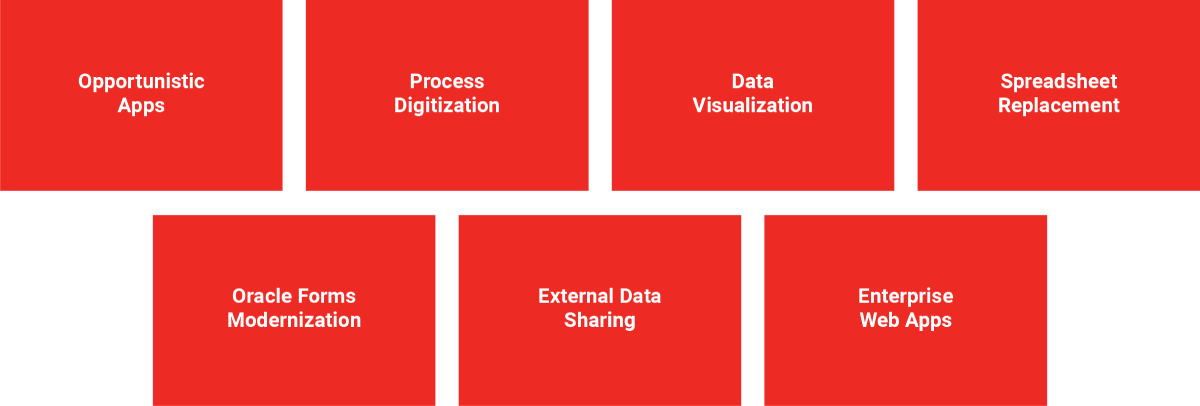What is a Low-code Application Platform?
A low-code application platform is an application platform that supports rapid application development, one-step deployment, and execution and management using declarative, high-level programming abstractions, such as model-driven and metadata-based programming languages. They support the development of user interfaces, business logic and data services; improve productivity; and are typically delivered as cloud services. Many players have design & built these over their Cloud platforms as well.
Traditional Application Development has challenges
- Requires specialized skills, dependency on professional talent
- Long development cycles, unacceptable time to market
- Increased business demands result in huge application backlog
- Expensive to build and maintain entire application stack
- Development model lacks agility, not suitable for rapid development of new ideas
Use Cases of a Low-code Application

Benefits of a Low-code Application Platform

Gartner Insights
By 2025, spending on low-code development technologies is expected to grow to almost $30 billion, with a compound annual growth rate (CAGR) of 20.9% from 2020 through 2025.
Demand in response to COVID-19 uncertainty, plus the reprioritization of long-term (three to five years) digital transformation initiatives, significantly increases the use of low-code application platforms (LCAPs).
New Buyer Demographic for Low-code Applications – The Business Buyer
As per Gartner, by year-end 2025, about 50% of all new low-code clients will come from business buyers who are outside the IT organization. Emerging priorities drive the business side of organizations to be more involved in development projects, and increasingly, the predominant control over IT budgets is slipping away from the IT departments.
How to Identify and Evaluate Your Next Low-Code Application Development Technologies
The potential benefits have led to a boom in low-code tooling and platforms across all aspects of application development and automation, with several low-code vendors. Many hundreds of vendors, ranging from cloud hyperscalers to vertical market specialists, are competing for market share.
| What Low-Code Technologies Do You Need? |
|
| two main dimensions of low-code technologies are |
|
| Select Low-Code Product Types of Interest | Few Examples of interest to customers
|
| Evaluation Criteria for Low-Code Development Tools |
|
What is the difference between no-code versus low-code development tools?
- “No-code” is a marketing term, implying the tool is for non-professional developers.
- “Low-code” tools often support scripting for capabilities beyond only a “no-code” approach.
- Invest in tools that offer prebuilt “blocks,” but beware of tools that are highly specialized solutions.
- Ensure the no-code or low-code approach fits the skill sets of the target developers, whether professional or citizen developers or both.
- Regardless of marketing labels, make sure the tool supports your existing integration, automation, and software development life cycle (SDLC) stacks.
Conclusion
IT Convergence can help you kickstart your Oracle APEX journey or even accelerate APEX to Oracle Cloud migration journey to maximize your time to value. Other key benefits which ITC can deliver:
– Inflight Upgrade of Oracle APEX on Oracle Cloud Infrastructure
– Assess & optimize APEX to Minimize architecture
– Oracle APEX integration with Identity Management SSO



